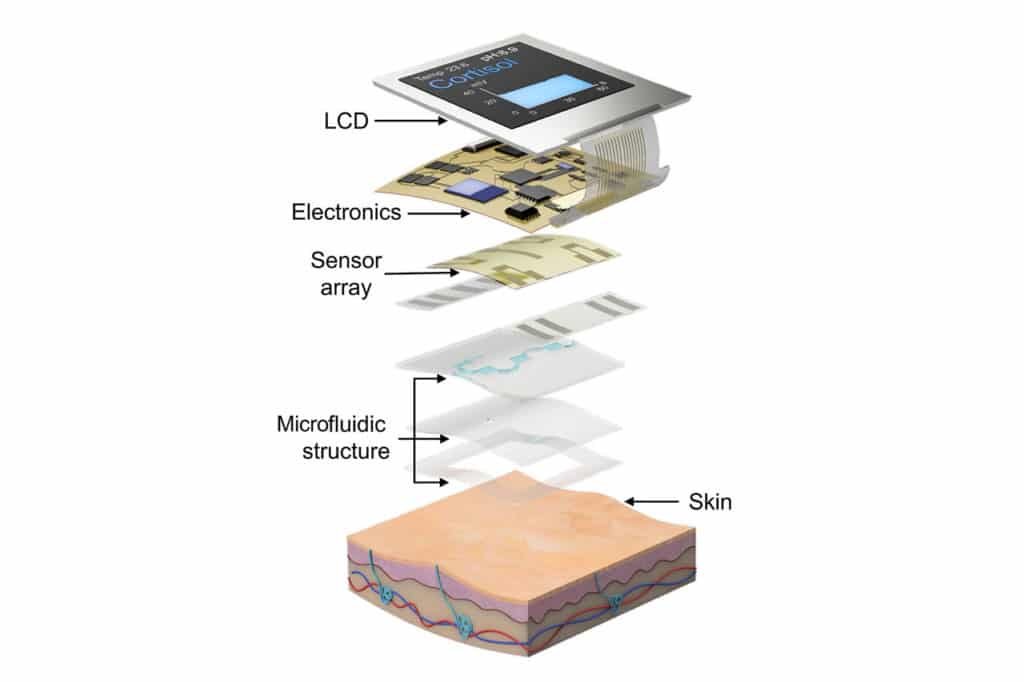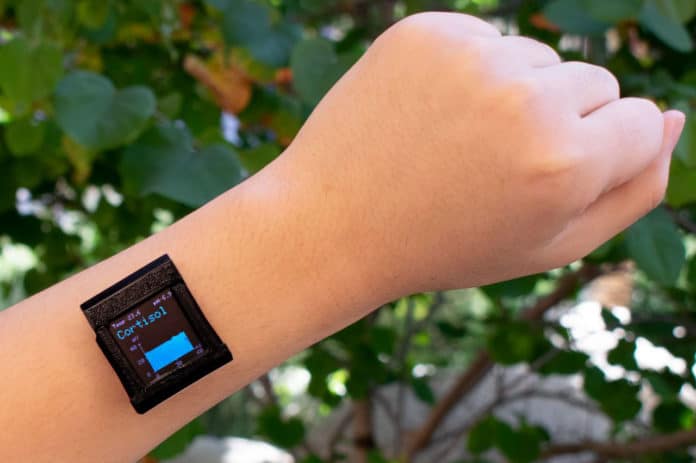Wearable technologies for personalized monitoring require sensors that track biomarkers often present at low levels. Cortisol – a key stress biomarker – is present in sweat at low nanomolar concentrations. Previous wearable sensing systems are limited to analytes in the micromolar-millimolar ranges.
Now, the University of California, Los Angeles (UCLA) researchers have developed a device that could be a major step forward; a smartwatch that assesses cortisol levels found in sweat – accurately, noninvasively, and in real-time. The technology could offer wearers the ability to read and react to an essential biochemical indicator of stress.
According to the researchers, cortisol is well-suited for measurement through wearable devices because its concentration levels in sweat are similar to its circulating levels. “We determined that by tracking cortisol in sweat, we would be able to monitor such changes in a wearable format, as we have shown before for other small molecules such as metabolites and pharmaceuticals,” said the study co-author Sam Emaminejad. “Because of its small molecular size, cortisol diffuses in sweat with concentration levels that closely reflect its circulating levels.”
The new smartwatch consists of a strip of specialized thin adhesive film that collects tiny volumes of sweat, measurable in millionths of a liter. An attached sensor detects cortisol using engineered strands of DNA, called aptamers, which are designed so that a cortisol molecule will fit into each aptamer like a key fits a lock. When cortisol attaches, the aptamer changes shape in a way that alters electric fields at the surface of a transistor.

Emaminejad’s lab had previously demonstrated that a disposable version of the specialized adhesive film enables smartwatches to analyze chemicals from sweat, as well as a technology that prompts small amounts of sweat even when the wearer is still. Earlier studies showed that sensors developed by Emaminejad’s group could be useful for diagnosing diseases such as cystic fibrosis and for personalizing drug dosages.
One of the challenges in using cortisol levels to diagnose depression and other disorders is that levels of the hormone can vary widely from person to person. So doctors can’t learn very much from any single measurement. However, the research team foresees that tracking individual cortisol levels over time using the smartwatch may alert wearers and their physicians to changes that could be clinically significant for diagnosis or monitoring the effects of treatment.
“This work turned into an important paper by drawing together disparate parts of UCLA,” said Paul Weiss, a UCLA distinguished professor of chemistry and biochemistry and of materials science and engineering, a member of CNSI, and a co-author of the paper. “It comes from us being close in proximity, not having ego problems, and being excited about working together. We can solve each other’s problems and take this technology in new directions.”
